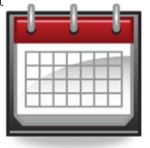Words Their Way is a program that offers a developmental curriculum for phonics/spelling instruction, reading fluency and vocabulary development. The hands-on activities engage students as they actively categorize their ‘word sorts’ and the assessment inventory provides a clear indicator of where each student is in the process of word development.
Where to Start?
- Assessment is Key! The Spelling Inventory provides a baseline for each student.

[This assessment shows the feature errors made in a 25 word list. Two errors in any column is the feature stage to start – this student will start with “Consonant/Digraphs’. The online database will also provide the same report along with the groups below.]
- Group the students from Inventory.

[This example shows that the students can be grouped into 3 groups.]
- Once you have your 2-4 groups, identify the word sorts from the text for each group. Photocopy for each student.
- Set up an area for a Words Their Way Board and a basket of extra scissors, envelops or plastic baggies to hold the individual sorts, coloured highlighters or pencils.
Routines and Activities
- Student Pick-Up of Sorts: Many options are possible to support student independence. I’ve used colour-coded post-its for each group. Each student has a coloured post-it with their name on a Words Their Way Board. This indicates the group that they belong for that week. [*Instead of post-its to group students, I’ve also used country flags when studying countries, animals or planet names during my science unit, geometric shapes – angles from Math, gummy bears just for fun.]
- Under the Board are photocopies of the sorts (with corresponding coloured post-its). Students pick up a copy of their sort.
- Students use a marker or crayon to colour-code a design on the back of their s
 ort (*will help to identify any pieces of paper that are dropped on the floor). Sort away and have fun.
ort (*will help to identify any pieces of paper that are dropped on the floor). Sort away and have fun. - When completed, place the words in a baggy or envelope.
- Home Practice: Using the web is a way to communicate with students and parents. I post each of the sorts on a class website so they can be downloaded and practiced at home. This alleviates having the ‘baggy of sorts’ going home and not returning. If you use a blog, you can invite the students to comment on their thinking strategies.
Class Schedules. The following schedule is a possibility that has worked in multiple classes. (Click here for a sample schedule, sample2 schedule):
The following schedule is a possibility that has worked in multiple classes. (Click here for a sample schedule, sample2 schedule):
- Monday: (45 minutes) introduce sort. This session takes the most amount of time. I work with each group in turn to ensure that they know the words to do their sorts.
- Tuesday: (10 minutes) repeat sort/articulate (or see Wed/Thurs). [*This is a spillover from Monday.]
- Wednesday: (15 minutes) speed sort (“How fast can you sort your words?”) or buddy sort or word hunt (use math, science or socials textbook or personal novel or other words on posters around the room – this is an open time for a walk around the room to seek new words to add to list-“must follow the pattern”). I may exchange these activities for “sorting with technologies” – see Thursday.
- Thursday: (15 minutes) sort using technology (Kidspiration/Inspiration sorts – audio recording of words or create a story/rap using the words in one category. Move this to the next stage by writing.). Activities can be done in a computer lab or mini-centre rotation in the classroom throughout the week.
- Friday: (30 minutes) test day (*or ‘show what you know day‘) and sharing day (strategies that they used to help them learn the categories or the strategy they used to remember. [*This session may comprise a traditional test but mostly likely is a ‘sort’ with added new words to their original list. I’m interested in knowing if students are able to articulate their personal rule of a sort and whether it can be applied/generalized to new vocabulary.]
This schedule is not carved in stone but is flexible in how you approach ‘word study’ as well as the available time in your week. Teachers are great at finding time in the course of a day to squeeze in sorting and reflective activities.
REASSESS USING THE INVENTORY
This is crucial in identifying what needs to be taught next. Regroup the students accordingly.
[This example shows the student has acquired the consonant/digraph features and (in January) has moved to ‘Within Words – Long vowels’ (January). The April assessment reveals a jump to ‘Syllables-Unaccented Final’. This is a great activity for students to see their progression over time and reflect on their progress.



2 thoughts on “Words Their Way”